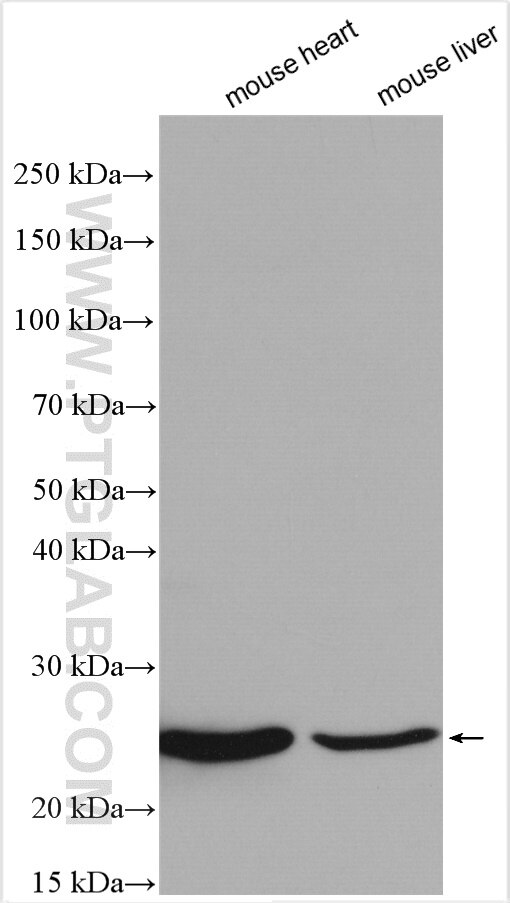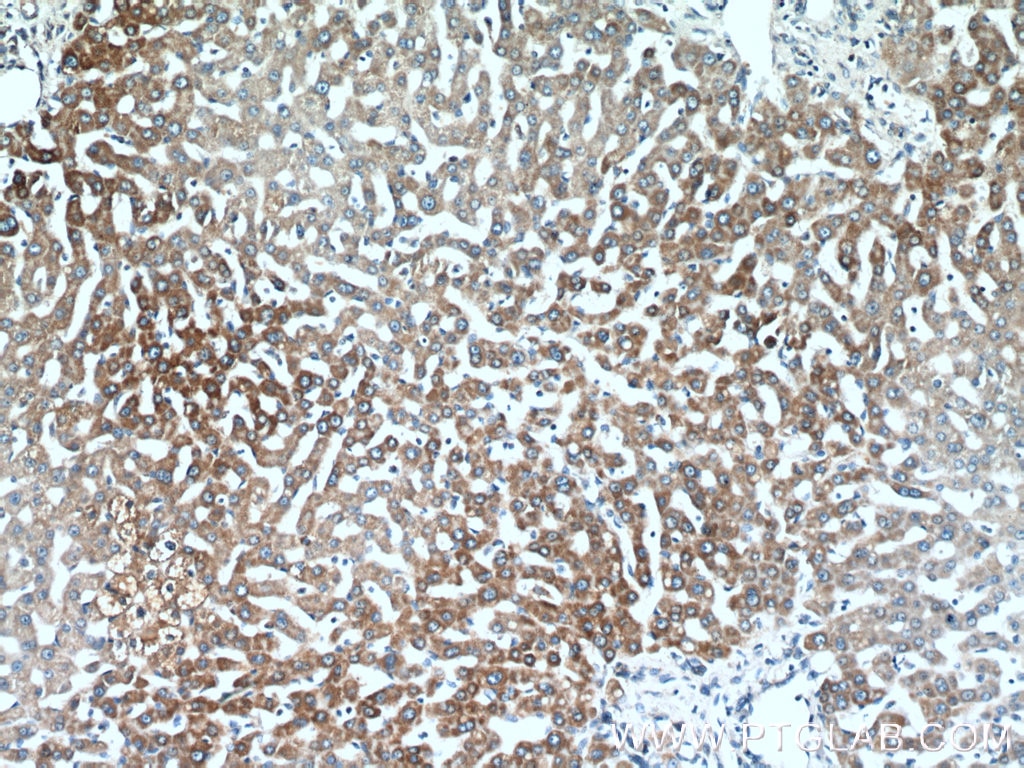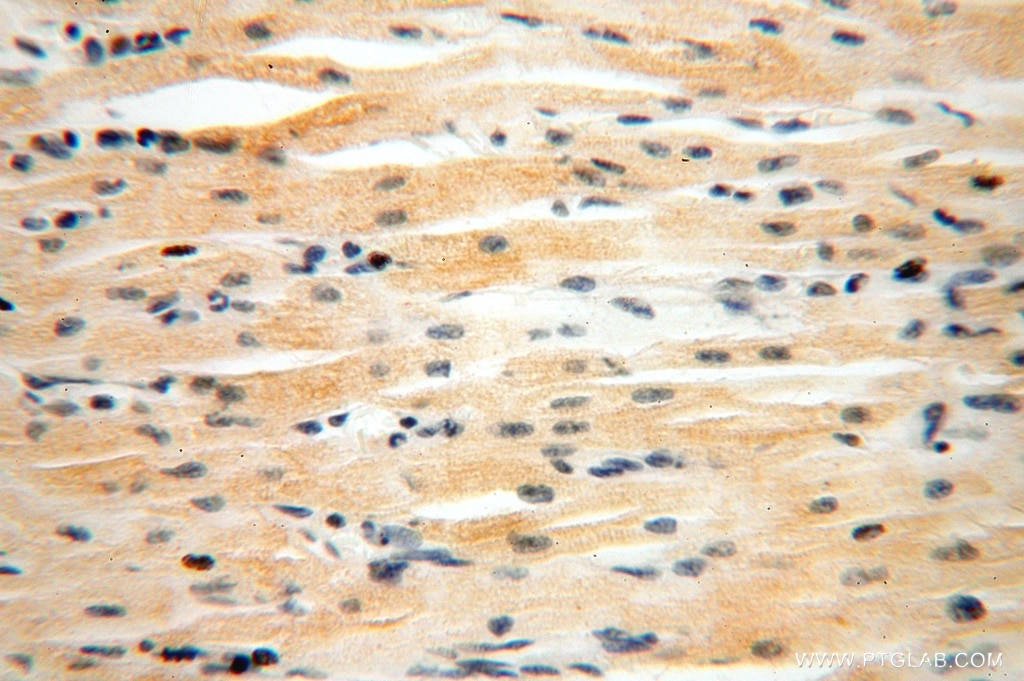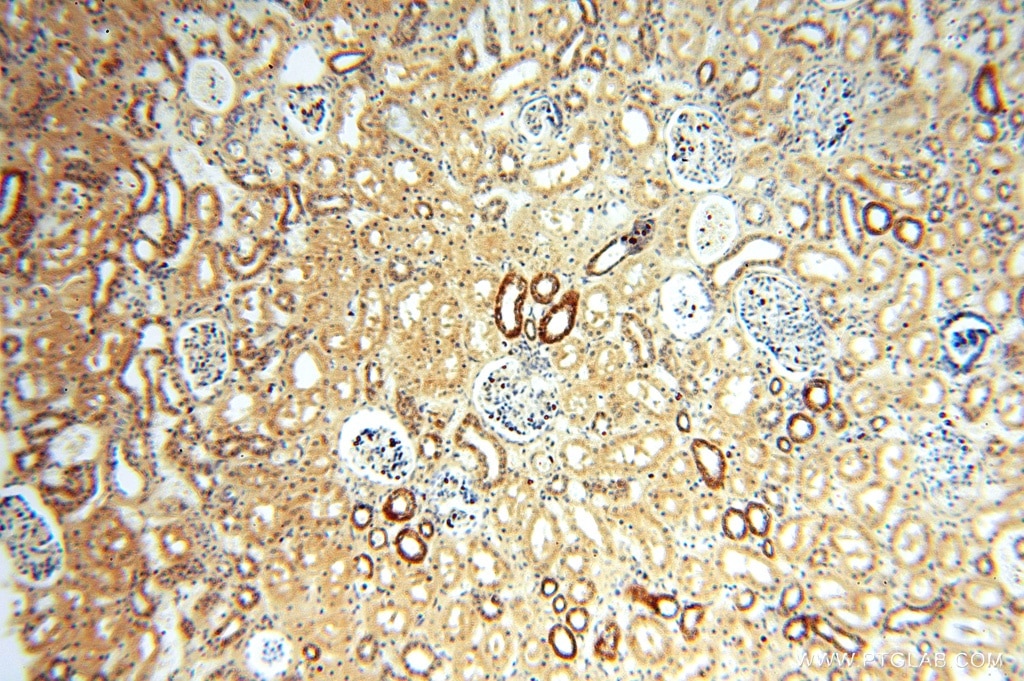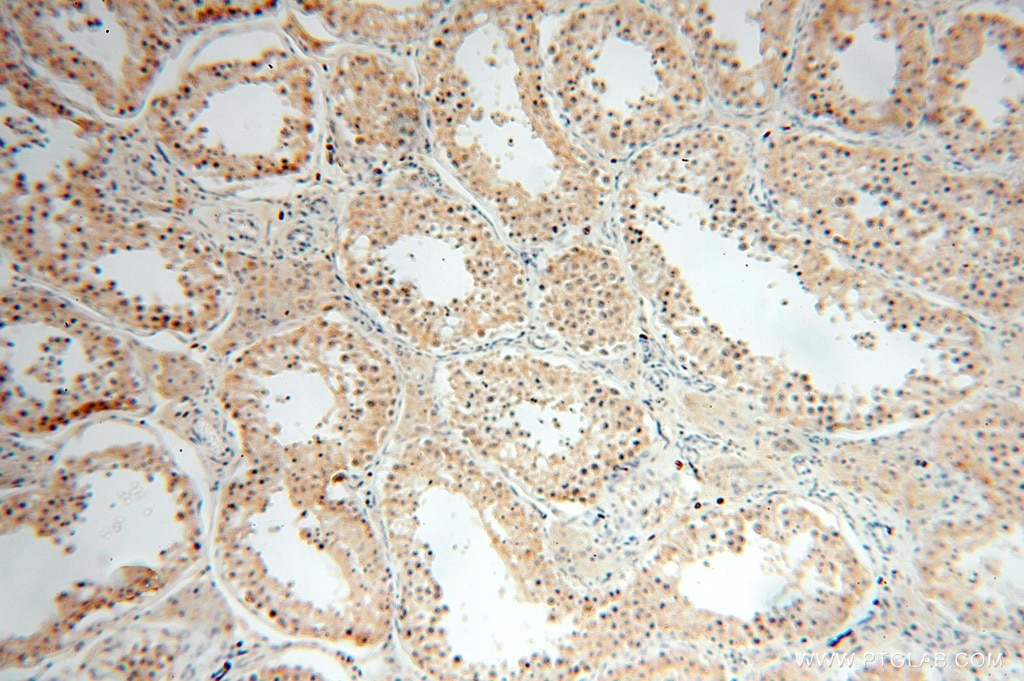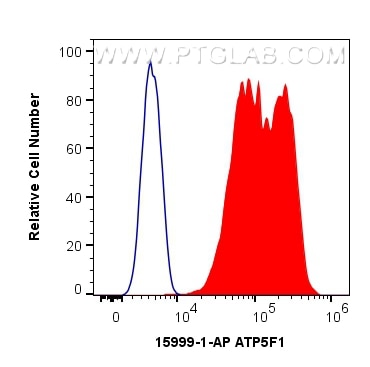Tested Applications
| Positive WB detected in | mouse heart tissue, mouse skeletal muscle tissue, mouse liver tissue |
| Positive IHC detected in | human liver tissue, human brain tissue, human heart tissue, human kidney tissue, human skin tissue, human testis tissue Note: suggested antigen retrieval with TE buffer pH 9.0; (*) Alternatively, antigen retrieval may be performed with citrate buffer pH 6.0 |
| Positive IF/ICC detected in | HeLa cells |
| Positive FC (Intra) detected in | HeLa cells |
Recommended dilution
| Application | Dilution |
|---|---|
| Western Blot (WB) | WB : 1:500-1:2000 |
| Immunohistochemistry (IHC) | IHC : 1:100-1:400 |
| Immunofluorescence (IF)/ICC | IF/ICC : 1:50-1:500 |
| Flow Cytometry (FC) (INTRA) | FC (INTRA) : 0.40 ug per 10^6 cells in a 100 µl suspension |
| It is recommended that this reagent should be titrated in each testing system to obtain optimal results. | |
| Sample-dependent, Check data in validation data gallery. | |
Published Applications
| WB | See 25 publications below |
| IHC | See 2 publications below |
| IF | See 2 publications below |
| CoIP | See 1 publications below |
Product Information
15999-1-AP targets ATP5F1 in WB, IHC, IF/ICC, FC (Intra), CoIP, ELISA applications and shows reactivity with human, mouse samples.
| Tested Reactivity | human, mouse |
| Cited Reactivity | human, mouse, rat |
| Host / Isotype | Rabbit / IgG |
| Class | Polyclonal |
| Type | Antibody |
| Immunogen |
CatNo: Ag8571 Product name: Recombinant human ATP5F1 protein Source: e coli.-derived, PET28a Tag: 6*His Domain: 1-256 aa of BC005366 Sequence: MLSRVVLSAAATAAPSLKNAAFLGPGVLQATRTFHTGQPHLVPVPPLPEYGGKVRYGLIPEEFFQFLYPKTGVTGPYVLGTGLILYALSKEIYVISAETFTALSVLGVMVYGIKKYGPFVADFADKLNEQKLAQLEEAKQASIQHIQNAIDTEKSQQALVQKRHYLFDVQRNNIAMALEVTYRERLYRVYKEVKNRLDYHISVQNMMRRKEQEHMINWVEKHVVQSISTQQEKETIAKCIADLKLLAKKAQAQPVM Predict reactive species |
| Full Name | ATP synthase, H+ transporting, mitochondrial F0 complex, subunit B1 |
| Calculated Molecular Weight | 256 aa, 29 kDa |
| Observed Molecular Weight | 25-30 kDa |
| GenBank Accession Number | BC005366 |
| Gene Symbol | ATP5F1 |
| Gene ID (NCBI) | 515 |
| RRID | AB_2258817 |
| Conjugate | Unconjugated |
| Form | Liquid |
| Purification Method | Antigen affinity purification |
| UNIPROT ID | P24539 |
| Storage Buffer | PBS with 0.02% sodium azide and 50% glycerol, pH 7.3. |
| Storage Conditions | Store at -20°C. Stable for one year after shipment. Aliquoting is unnecessary for -20oC storage. 20ul sizes contain 0.1% BSA. |
Background Information
ATP5F1(ATP synthase subunit b) belongs to the eukaryotic ATPase B chain family. The ATP5F1 gene encodes subunit B of the mitochondrial ATP synthase Fo unit, which contains 214-amino acid with a 42-amino acid import signal(PMID:1831354). Mitochondrial membrane ATP synthase(F1F0 ATP synthase or Complex V) produces ATP from ADP in the presence of a proton gradient across the membrane which is generated by electron transport complexes of the respiratory chain.
Protocols
| Product Specific Protocols | |
|---|---|
| IF protocol for ATP5F1 antibody 15999-1-AP | Download protocol |
| IHC protocol for ATP5F1 antibody 15999-1-AP | Download protocol |
| WB protocol for ATP5F1 antibody 15999-1-AP | Download protocol |
| Standard Protocols | |
|---|---|
| Click here to view our Standard Protocols |
Publications
| Species | Application | Title |
|---|---|---|
Adv Mater Supramolecular Hydrogel with Ultra-Rapid Cell-Mediated Network Adaptation for Enhancing Cellular Metabolic Energetics and Tissue Regeneration | ||
Proc Natl Acad Sci U S A Evaluation of intramitochondrial ATP levels identifies G0/G1 switch gene 2 as a positive regulator of oxidative phosphorylation. | ||
Part Fibre Toxicol Transcriptomics of single dose and repeated carbon black and ozone inhalation co-exposure highlight progressive pulmonary mitochondrial dysfunction. | ||
Free Radic Biol Med Mitochondrial and glucose metabolic dysfunctions in granulosa cells induce impaired oocytes of polycystic ovary syndrome through Sirtuin 3. | ||
J Neurosci A Mutation in Hnrnph1 That Decreases Methamphetamine-Induced Reinforcement, Reward, and Dopamine Release and Increases Synaptosomal hnRNP H and Mitochondrial Proteins. | ||
Cell Death Dis Calcium sensing receptor protects high glucose-induced energy metabolism disorder via blocking gp78-ubiquitin proteasome pathway. |
Reviews
The reviews below have been submitted by verified Proteintech customers who received an incentive for providing their feedback.
FH siting (Verified Customer) (07-13-2020) | very good signal
 |
FH Yan (Verified Customer) (01-28-2020) | It worked very well with mouse heart tissue for western blot.
|

